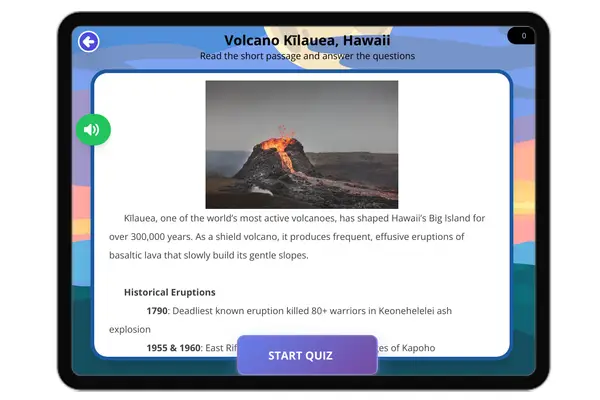Types of Plate Boundaries — Passage
Earth's surface is like a giant jigsaw puzzle, with tectonic plates constantly moving and interacting. Geologists piece together clues from rocks, fossils, and seafloor structures to map ancient plate boundaries and understand how our planet has changed over millions of years.
1. Divergent Boundaries: Pulling Apart
Evidence:
● Pillow basalts: Lava that cools rapidly underwater, forming bulbous shapes (common at mid-ocean ridges).
● Magnetic stripes: Symmetrical patterns of magnetic minerals in seafloor rock, recording Earth's magnetic field reversals as new crust forms.
● Fossil clues: Identical freshwater reptile fossils (like Mesosaurus) found in Africa and South America—continents now separated by the Atlantic Ocean.
Example: The Mid-Atlantic Ridge shows young, basaltic rock at the center, aging outward—proof of seafloor spreading.
2. Convergent Boundaries: Colliding Plates
Evidence:
● Ophiolites: Slabs of ancient oceanic crust thrust onto continents (e.g., California's Coast Ranges).
● Metamorphic rocks: High-pressure minerals like blueschist form where plates subduct.
● Fossil mismatches: Marine fossils atop mountains (Himalayas) reveal landmasses once underwater.
Example: The Andes Mountains contain volcanic rocks and folded sedimentary layers, showing oceanic-continental collision.
3. Transform Boundaries: Sliding Past
Evidence:
● Offset features: Rivers or rock layers abruptly cut by faults (like California's San Andreas).
● Earthquake scars: Pulverized rock ("fault gouge") along shear zones.
Example: The Alpine Fault in New Zealand has shifted rocks 480 km horizontally over 25 million years!
Putting It All Together
By studying:
● Rock ages (youngest at divergent zones, oldest near trenches),
● Fossil distributions (like tropical plant fossils in Arctic rocks),
● Magnetic and seismic data,
scientists reconstruct Earth's "lost" boundaries—like the ancient Tethys Ocean floor now crumpled into the Himalayas
Fun Fact: The same dinosaur species (Plateosaurus) fossils found in Europe and North America prove these continents were once connected!
Another Fun Fact: Did you know that the Himalayas contain fossilized seashells and shark teeth? These marine fossils, found at the top of Mount Everest, prove that the world's highest mountain range was once the bottom of an ancient ocean! This incredible transformation happened when India crashed into Asia 50 million years ago at a
What type of rock forms when lava cools rapidly underwater at divergent boundaries?
GraniteSandstonePillow basaltMarbleWhy are identical freshwater reptile fossils found on different continents?
The reptiles could swim across oceansThe continents were once joined togetherScientists made a mistake in identificationWind carried the fossilsWhat creates the symmetrical magnetic stripes on the seafloor?
Underwater volcanoesEarth's magnetic field reversing over timeFish swimming in patternsOcean currentsWhat happens to oceanic crust at convergent boundaries?
It evaporatesIt subducts (sinks) into the mantleIt turns into magma immediatelyIt floats on top of continental crustWhat type of boundary would you expect to find offset rivers or rock layers?
Divergent boundaryConvergent boundaryTransform boundarySubduction zoneWhat kind of fossils would you most likely find on top of the Himalayas?
Desert plantsMarine creaturesPolar bearsDinosaursWhat does the presence of ophiolites on continents suggest?
Ancient seafloor was pushed onto landVolcanoes erupted underwaterEarth's crust is getting thinnerFossils can turn into rocksHow do scientists use rock ages to study plate boundaries?
The youngest rocks are always in the middle of oceansThe oldest rocks are found at divergent boundariesRock ages don't help study plate boundariesAll rocks are the same age













